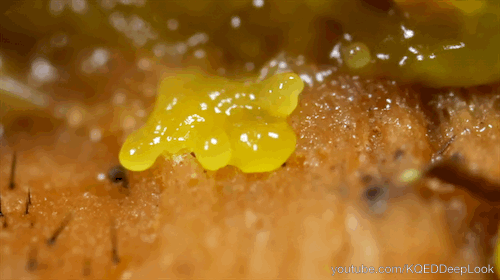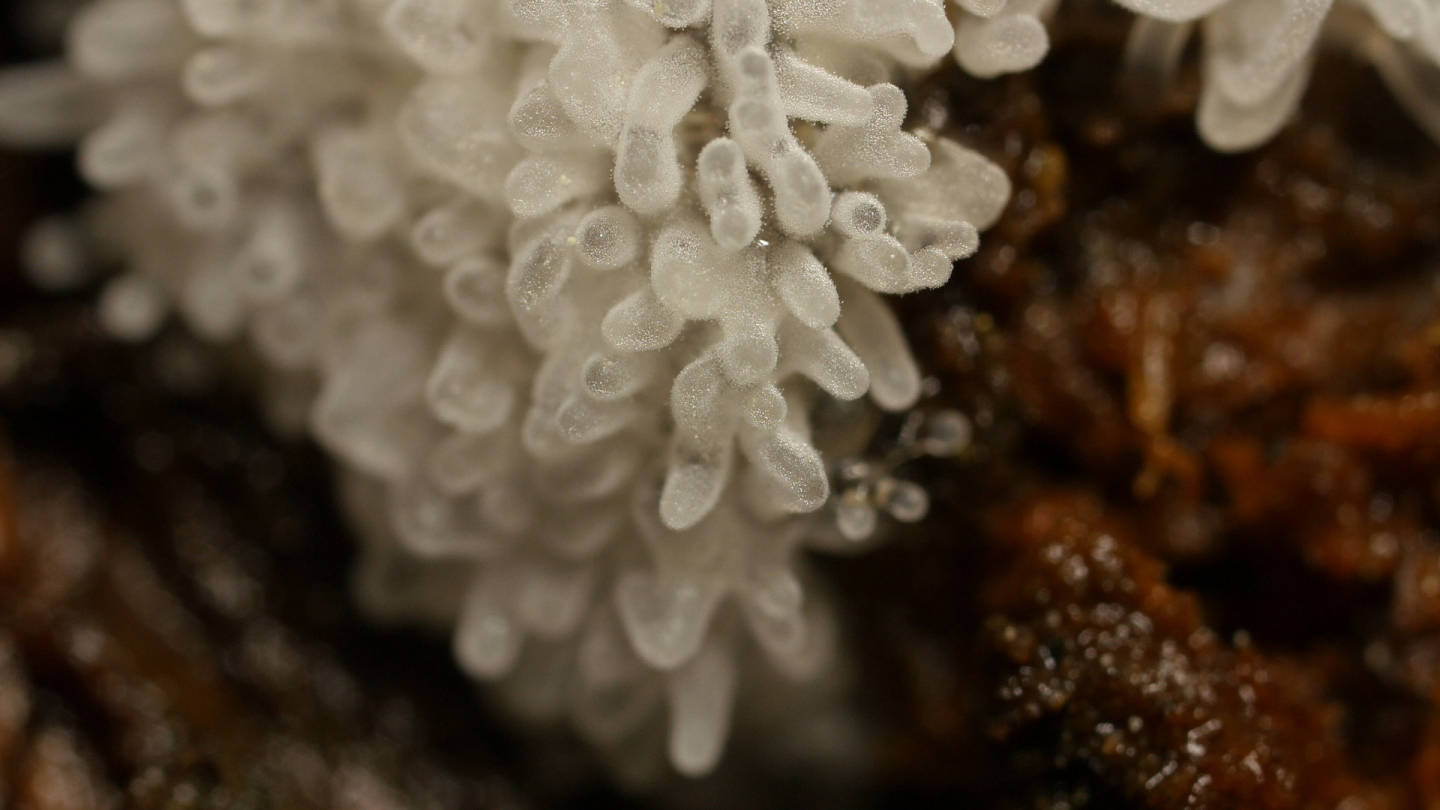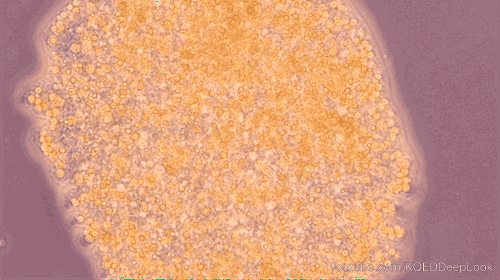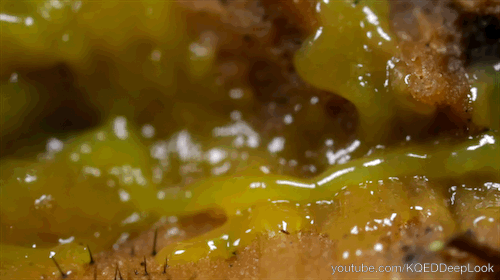Flip over a rotting log and chances are you’ll see a goopy streak stuck to the wood. If you were to film this goop and play the video back in high speed, you’d see something that might remind you of the 1950s sci-fi classic “The Blob”—a jelly-like creature pulsating in a strange way, a little bit forward, a little bit back, spreading and searching for something to devour.

But this creature isn’t intent on world domination. It’s a slime mold, a very simple organism that is neither plant, nor animal, nor fungus. Unlike the cells of other living beings, which have only one nucleus that carries their genetic information, slime molds can organize into something like a cell with thousands of nuclei. Slime molds may move slowly, but they excite scientists by their ability to get a lot done with very little.

Researchers at UC San Diego and UC Davis have been focusing their attention on how slime molds get around, in the hope of inspiring a new generation of soft-bodied robots with medical applications.
Slime molds don’t have legs or any appendages. They eat bacteria and tiny fungi. And they move just by changing their shape.
“It’s intriguing to understand how they can move when they’re softer than the environment,” said UC San Diego aerospace engineer Juan Carlos del Álamo. “The absence of limbs makes it a difficult problem.”
Slime mold’s locomotion is triggered by a chemical reaction.

In the lab, del Álamo and his colleagues cut off small pieces of a bright yellow slime mold called Physarum polycephalum and put them under a microscope. They watched each piece squeeze itself. This contraction is triggered by tiny calcium ions flowing inside it. The slime mold contracts its wall, then sloshes to move the calcium ions back so that they can trigger another contraction—at least that’s the researchers’ hypothesis. Under the microscope, the piece of slime mold looks like a pulsating water balloon. It contracts every minute or so and can glide over different surfaces.
“It’s similar to what happens in our muscles when they contract,” said del Álamo.
Believe it or not, slime molds and humans are both made up of similar proteins.
Del Álamo doesn’t build robots, but his hope is that his team’s work on slime mold locomotion will inspire the creation of a kind of robotic goo that could squeeze into the narrowest parts of our body and help us stay healthy by say, unclogging our arteries or performing eye surgery.

Nothing like this exists yet, said del Álamo. But his research is part of a broad interest in “active soft matter”—the search of how to harness materials at the boundary of solid and fluid that can generate their own movement.
“This isn’t going to happen next year,” laughed del Álamo.
For the time being, he’s having fun imagining a sci-fi blob that might one day replace today’s catheter in your heart or laser surgery on your eyes.